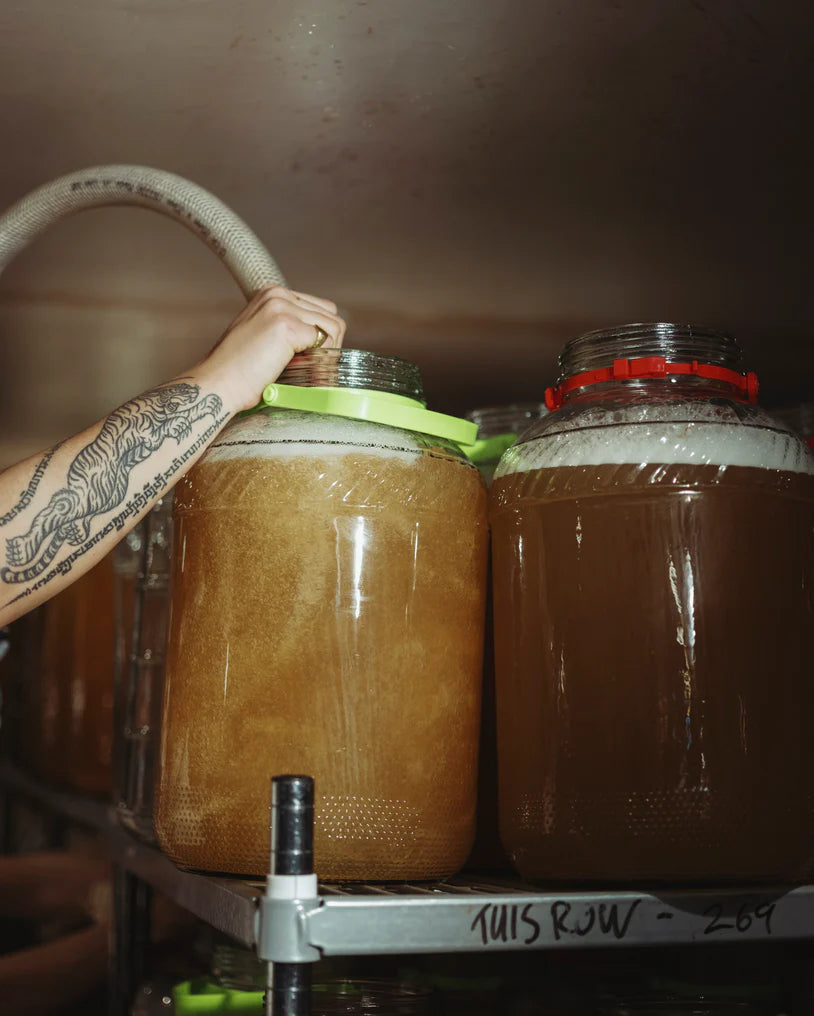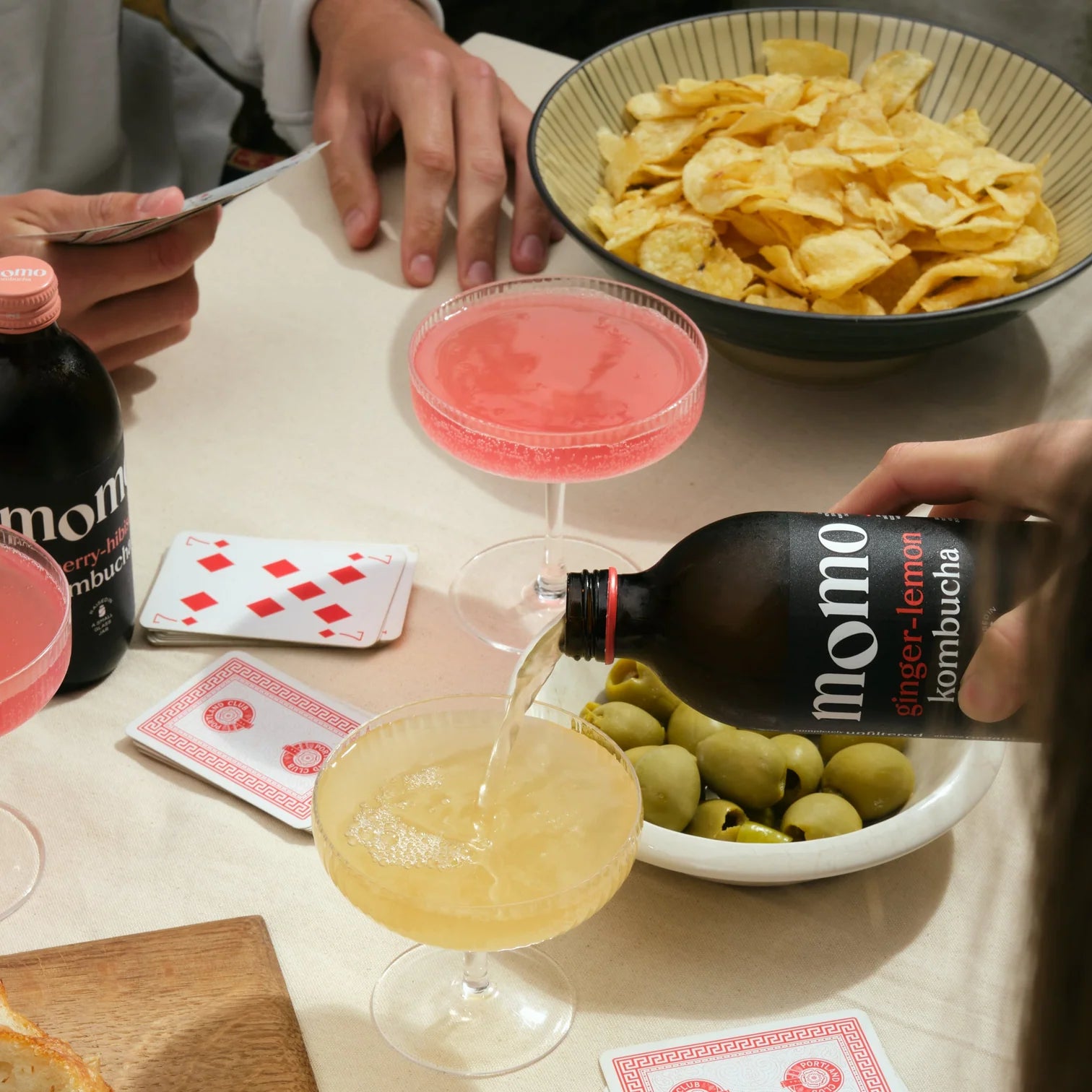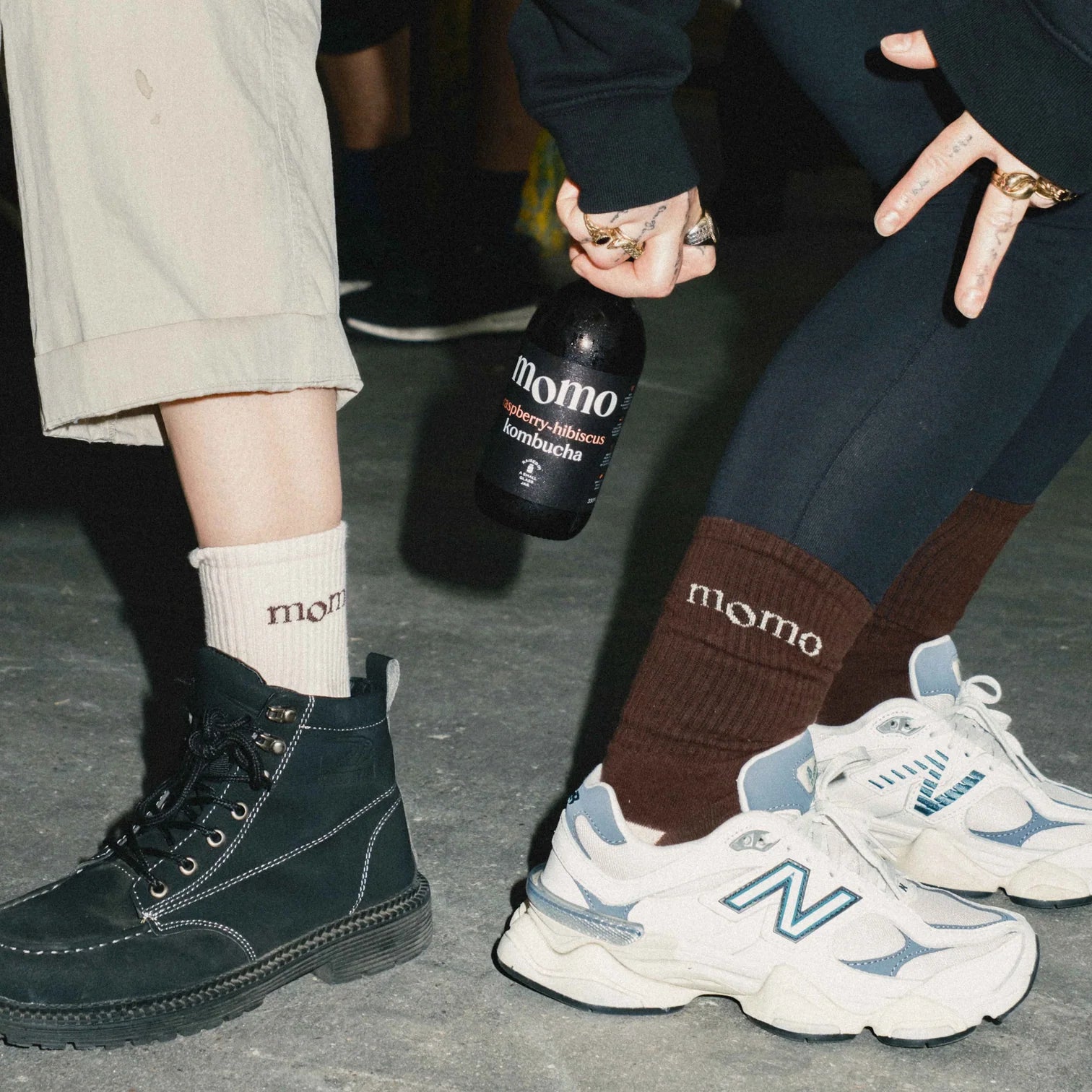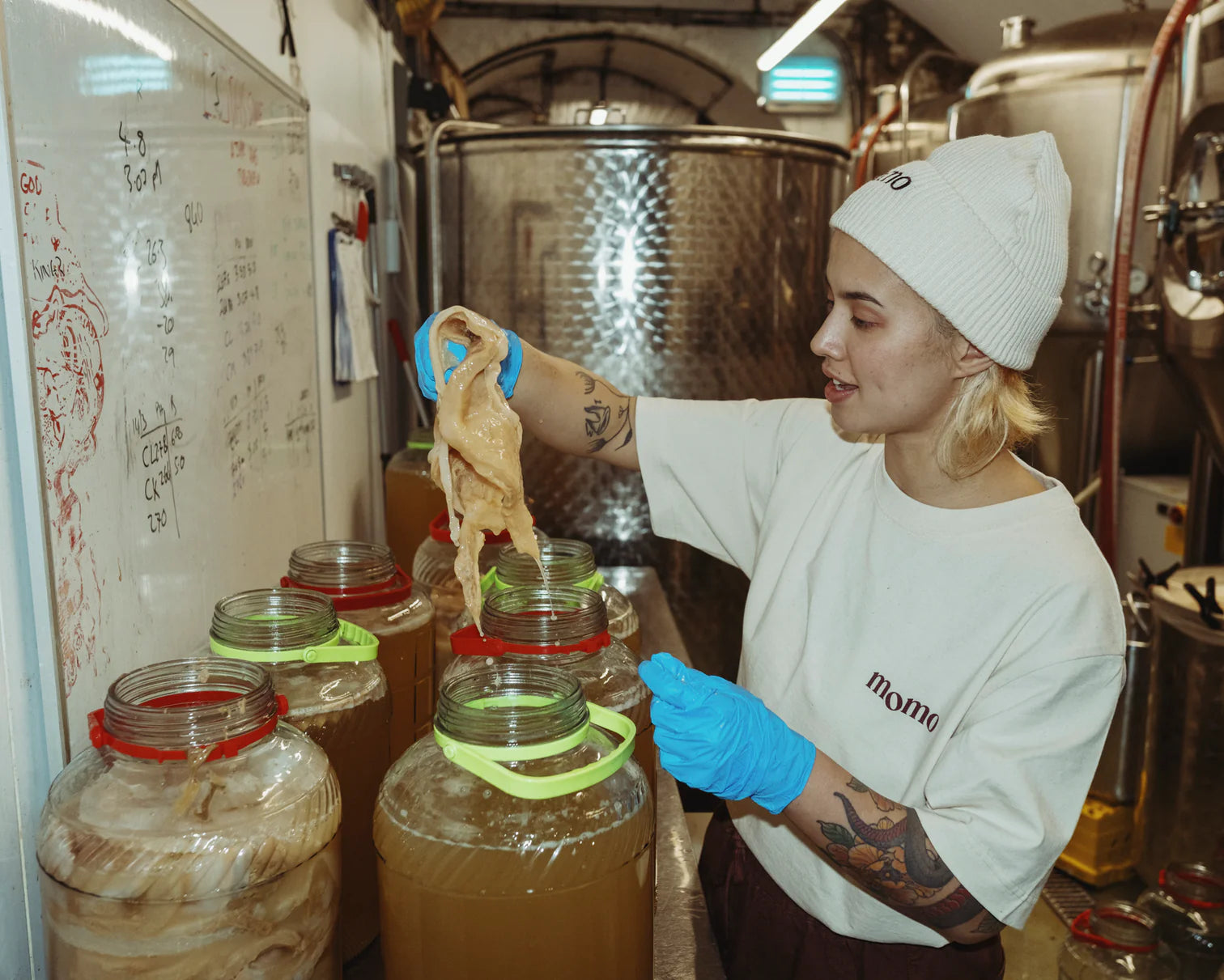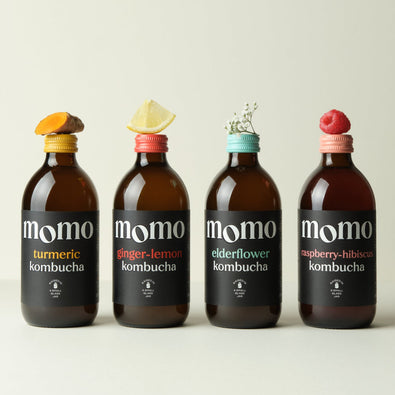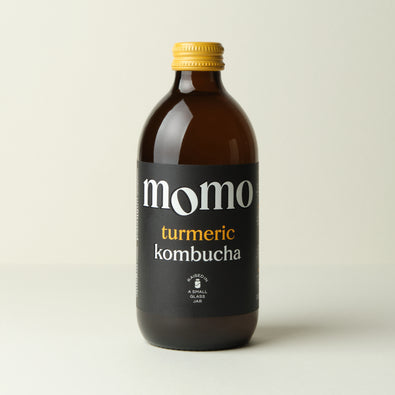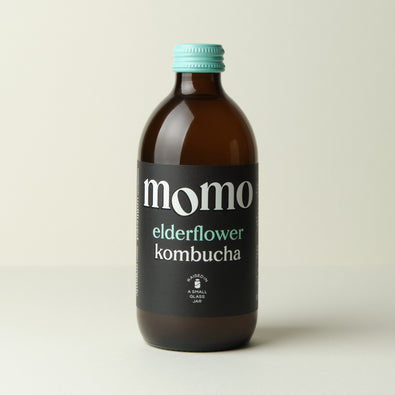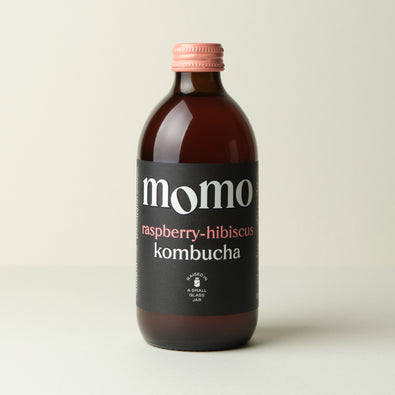What is kombucha?
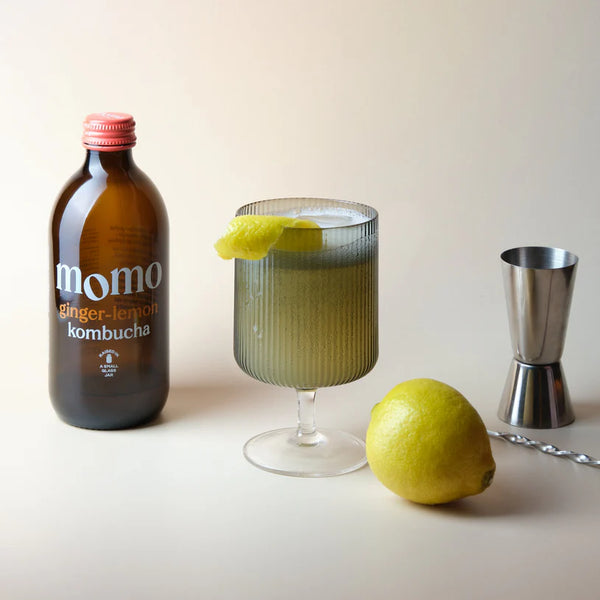

Kombucha is a fermented tea that has been around for thousands of years. When properly brewed it is a delicious, slightly fizzy and refreshing soft drink, best enjoyed chilled. Low in sugar, it is packed with probiotics and full of organic acids.
There are just four ingredients in real kombucha: tea, water, sugar and a SCOBY (aka starter culture). A SCOBY is a Symbiotic Culture Of Bacteria and Yeast which creates kombucha’s stunningly unique flavour.
As kombucha ferments, a cellulose pellicle grows across the top. People often refer to that pellicle as “the SCOBY”, but SCOBY refers to the entire living culture.
How is kombucha made?
Kombucha is made by fermenting sweet tea using a symbiotic culture of bacteria & yeast (SCOBY). You can start with black or green tea; we use a blend of two ancient varieties: Sencha and Assam.
During fermentation, the yeast in the SCOBY eats up the sugar and converts it into alcohol. At the same time, bacteria in the SCOBY convert this alcohol into acetic acid.
As the fermentation progresses, a cellulose pellicle grows across the top. As mentioned above, a lot of people refer to this pellicle as “the SCOBY.”
This special kind of fermentation transforms the flavour, and fills kombucha with healthy live cultures. After around 10 days, the final product is ready. We remove the pellicle but leave the kombucha completed unfiltered. We drain the fermentation vessels, and re-use the culture for the next batch of kombucha tea.
The final product contains a trace (<0.5%) of alcohol, a little caffeine and some tangy acetic acid. The gut-friendly microbes continue to live on in the mixture. Kombucha is probiotic.
With fermentation complete, MOMO adds bubbles by lightly carbonating the booch. We flavour our kombucha with organic cold pressed juice and organic dried flowers.
How to tell it's authentic
In the UK you can buy two distinct types of kombucha; chilled and ambient. Chilled kombucha is authentic; ambient has been processed to remove the live cultures.
Chilled kombucha is a living thing, and if you leave it at room temperature, the fermentation process will continue.
Ambient kombucha must be brewed from concentrate, super-fine-filtered or pasteurised. This makes it shelf-stable, and reduces or removes the live cultures. Some brands then add in lab grown cultures that won't trigger fermentation. In all cases, this process removes the diversity of the naturally occurring live cultures, impacts the depth of flavour, and in our view lessens the gut health benefits.
Chilled kombucha is bottled at the source, as it is. Cooling it prevents further fermentation. The cultures live on, ready to share their health benefits with you.
MOMO Kombucha is raw and completely unfiltered. Because MOMO is unfiltered, it has a slight cloudy appearance which is the effect of the live cultures suspended in the liquid. Other brands tend to be clearer as they have been so heavily filtered.
What does it taste like?
Kombucha has a complex tangy flavour that likes to defy language. The simplest answer is to try it.
The flavour palette of all good kombucha starts with its fundamental ingredient - tea. We use a blend of three teas, which combine to create a cleaner, zingier and earthier flavour than a typical breakfast tea. This is the initial flavour base.
After fermentation, the sour flavour of acetic acid punches through. The small amount of unfermented sugar leaves a hint of sweetness; how much depends on the flavour.
After fermentation is complete, MOMO adds bubbles by lightly carbonating the kombucha. To flavour we use a combination of different organic cold pressed juices and organic dried flowers: Elderflowers and Hibiscus flowers to be precise. Each flavour is immediately recognisable.
It’s slightly sour, has a deep, broad palette, and a sweetness that depends on the variety.
The ancient origins
Kombucha's origin goes way back. No one's quite sure how old it is, but most evidence suggests its at least 2000 years old.
Some suggest that it originated in north-east China around 200 BCE. From there, so the story goes, it spread east to Japan through the efforts of a fabled Korean physician named Kombu. Cha is Chinese for tea - and the rest is history.
Kombucha is a living thing, so the specific microbes in each batch vary. The main cultures are yeast and acetic acid bacteria. Many people draw comparisons with the tangy after-taste of cider vinegar; acetic acid is prominent in both
What's that floating in the jar?
Drinking a fermented beverage that's had a floppy frisbee floating in it might seem strange. What you’re looking at is a pellicle, a natural part of the brewing process - and frankly, it is weird looking. And yet, millions of people drink kombucha every day. How delicious must it be?
When you look at a pellicle, take pleasure in the display of inter-species teamwork. A kombucha culture is a mixture of bacteria and yeast. We give this culture a food supply (a little sugar) and a medium to reproduce (the tea). They do the rest.
The kombucha bacteria and yeast are symbiotic - their interests match one another. The yeast likes to convert sugar into alcohol, but too much alcohol in the mixture would kill the yeast. The friendly bacteria love to feed on alcohol: they turn it into acetic acid, and the ferment thrives.
The pellice, often referred to as the SCOBY, is the byproduct of this fermentation process. That’s why when drinking kombucha, it is natural for it to be slightly cloudy or contain a small pellicle floating in the liquid. Don’t worry, good brews have bits.
